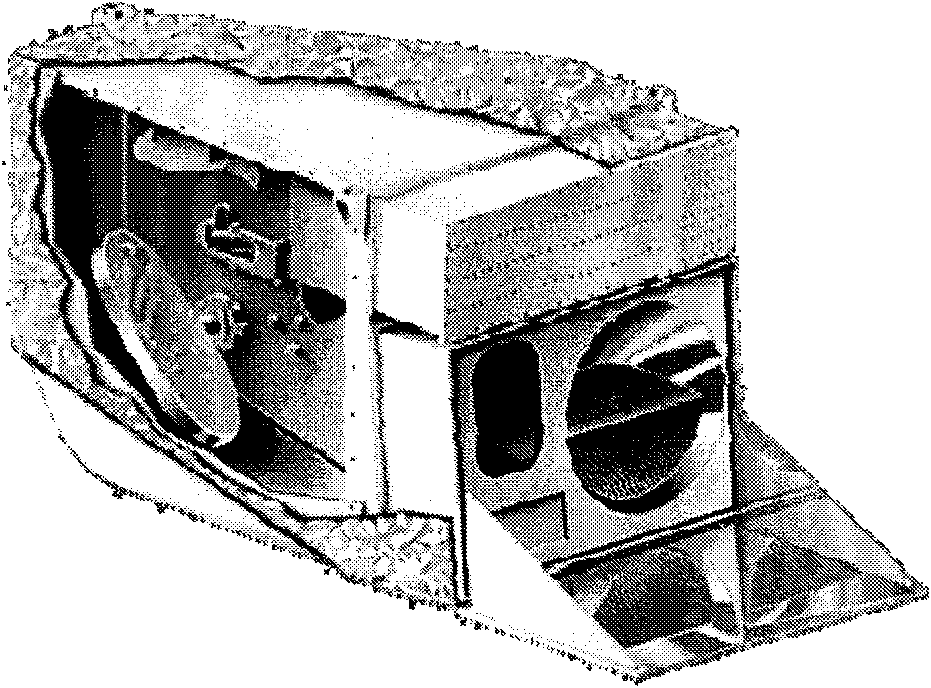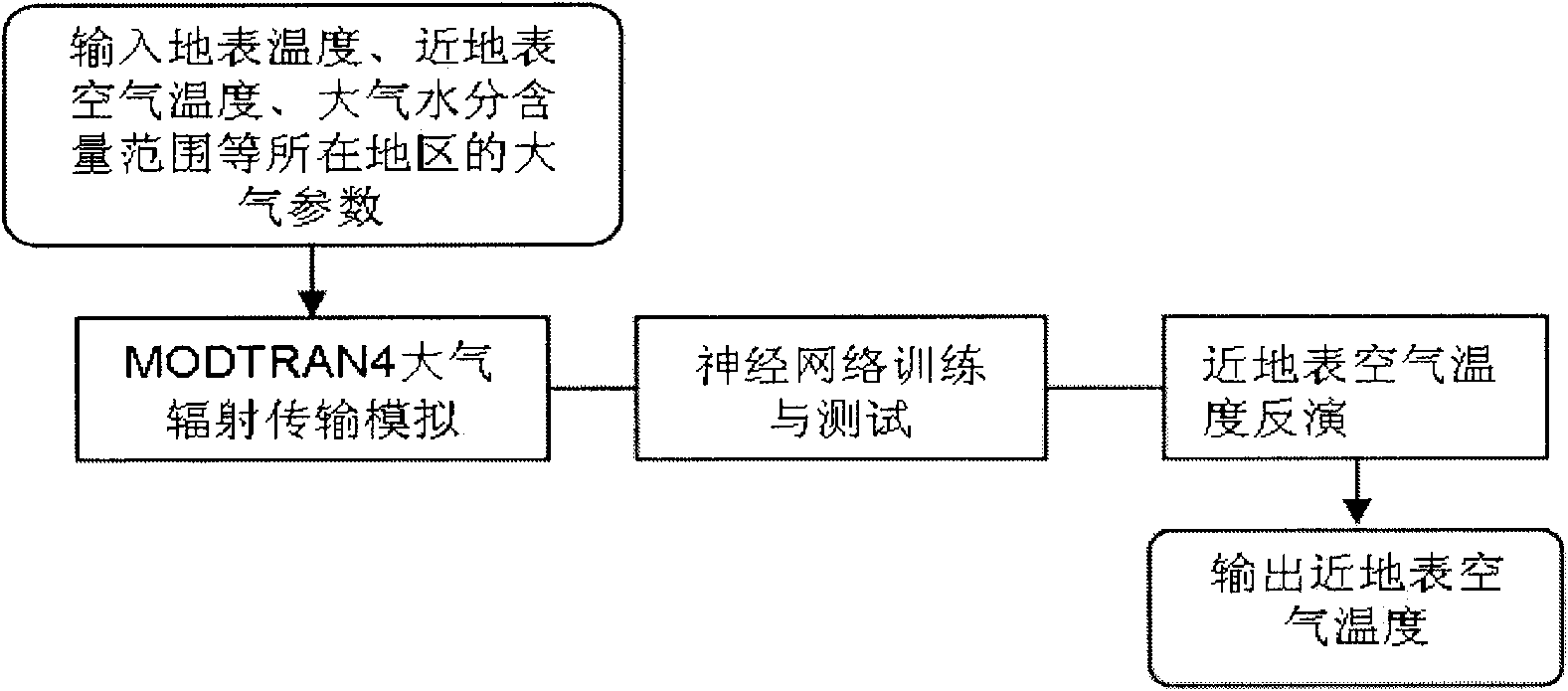Method for estimating temperature of near-surface air from MODIS data
A technology of air temperature and surface temperature, applied in ICT adaptation, climate sustainability, re-radiation of electromagnetic waves, etc., can solve the problems of interpolation accuracy and timeliness of meteorological stations, and improve inversion accuracy and calculation time, providing estimation accuracy, and practical and simple effects of operation
- Summary
- Abstract
- Description
- Claims
- Application Information
AI Technical Summary
Problems solved by technology
Method used
Image
Examples
Embodiment Construction
[0042] The inversion of land surface temperature and emissivity is based on the thermal radiation transfer equation, and the general expression is shown in formula (1) [Mao Kebiao, research on land surface temperature inversion method based on MODIS data, master's thesis, Nanjing University, 2004.5.] :
[0043] B i (T i )=ε i (θ)τ i (θ)B i (T s )+[1-τ i (θ′)][1-ε i (θ)τ i (θ) (Equation 1)
[0044] B i (T ia )+[1-τ i (θ)] B i (T ia )
[0045] where T s is the surface temperature, T i Indicates the brightness temperature of the star obtained by channel i at the height of the sensor, τ i (θ) represents the atmospheric transmittance of channel i in the observation direction θ, θ′ represents the direction of the downward brightness temperature radiation of the atmosphere, ε i (θ) represents the surface emissivity of channel i at the observation direction θ. B i (T i ) is the radiation intensity received by the sensor, B i (T s ) Radiation intensity at the sur...
PUM
 Login to View More
Login to View More Abstract
Description
Claims
Application Information
 Login to View More
Login to View More - R&D
- Intellectual Property
- Life Sciences
- Materials
- Tech Scout
- Unparalleled Data Quality
- Higher Quality Content
- 60% Fewer Hallucinations
Browse by: Latest US Patents, China's latest patents, Technical Efficacy Thesaurus, Application Domain, Technology Topic, Popular Technical Reports.
© 2025 PatSnap. All rights reserved.Legal|Privacy policy|Modern Slavery Act Transparency Statement|Sitemap|About US| Contact US: help@patsnap.com



